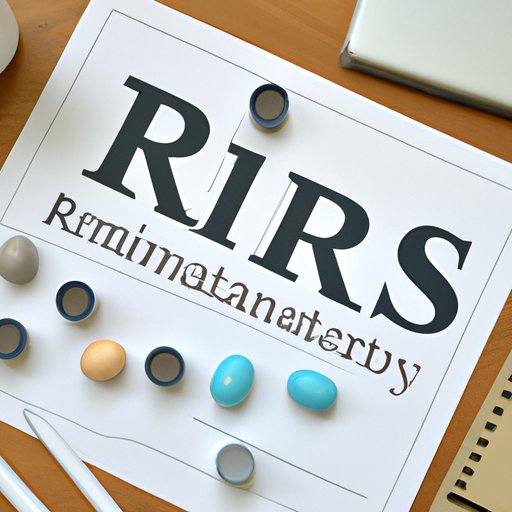
I. Introduction
Individual Retirement Accounts (IRAs) are a popular type of retirement savings account that offers tax advantages to individuals who are saving for their golden years. These accounts can be used to invest in a wide range of assets, from stocks and bonds to mutual funds and real estate investment trusts. But how many IRAs can you have? And is it a good idea to have multiple accounts? In this article, we will explore the pros and cons of having multiple IRAs and provide tips on how to get the most out of your retirement savings.
II. Breaking Down the IRA Limit: How Many Can You Have?
Under federal law, there are no limits to the number of IRAs an individual can have. However, there are limitations on how much you can contribute to your accounts each year. For 2021, the maximum contribution limit is $6,000 for individuals under the age of 50 and $7,000 for those over the age of 50. These contribution limits apply to all IRAs, whether you have one or multiple accounts.
Having multiple IRAs can offer some benefits, such as diversification and flexibility in your investment strategy. However, there are some drawbacks to consider, such as the potential for higher fees, more paperwork, and difficulty in managing multiple accounts.
III. Getting the Most Out of Your Retirement Savings: Are Multiple IRAs the Answer?
If you are looking to maximize your retirement savings, having multiple IRAs can be a smart move. By spreading your money across different accounts, you can diversify your investments and potentially reduce your overall risk. For example, you could have one IRA focused on stocks, another on bonds, and a third on real estate investments.
Furthermore, having multiple IRAs can also help you reduce your taxes. By strategically dividing your contributions between traditional and Roth IRAs, you can take advantage of the tax benefits of both types of accounts. Traditional IRAs offer upfront tax deductions, while Roth IRAs offer tax-free withdrawals in retirement. By having both types of accounts, you can enjoy the best of both worlds.
IV. Navigating IRA Limits and Managing Multiple Accounts
Managing multiple IRAs can be tricky, but it doesn’t have to be overwhelming. Here are some tips to help you navigate IRA limits and simplify the process:
- Be aware of contribution limits and deadlines
- Consider consolidating your accounts to reduce fees and paperwork
- Choose a custodian that offers online account management
- Stay organized by keeping track of your contributions and distributions
V. One IRA or Several? Pros and Cons of Multiple Retirement Accounts
While having multiple IRAs can offer some benefits, it’s not the right strategy for everyone. Here are some factors to consider when deciding whether to open multiple accounts:
- Asset allocation: Having multiple accounts can make it easier to diversify your portfolio
- Record-keeping: Managing multiple accounts can require more paperwork and organization
- Tax implications: Having multiple accounts can potentially reduce your tax bill, but it can also complicate your tax planning
VI. Maximizing Your Retirement Nest Egg: The Case for Diversifying Your IRA Holdings
While having multiple IRAs can help you diversify your investments, it’s important to think beyond just having more than one account. To truly maximize your retirement savings, you should have a diversified portfolio of retirement accounts tailored to your specific financial goals. For example, you might have a traditional IRA for tax-deferred savings, a Roth IRA for tax-free withdrawals, and a self-directed IRA for alternative investments.
By having a diverse mix of retirement accounts, you can ensure that you are protected against market volatility and have the flexibility to adjust your investments as your needs change over time.
VII. Beyond Traditional and Roth: Exploring Alternative IRA Options
In addition to traditional and Roth IRAs, there are several other types of IRAs that you may want to consider:
- SEP-IRAs: For self-employed individuals or small business owners
- SIMPLE IRAs: For small businesses with fewer than 100 employees
- Inherited IRAs: For beneficiaries who have inherited an IRA from a deceased account holder
Each of these account types offers its own advantages and limitations, so be sure to do your research and consult with a financial advisor before opening any new accounts.
VIII. Conclusion
If you’re wondering how many IRAs you can have, the answer is that there is no limit. Having multiple IRAs can offer some advantages when it comes to diversification and tax planning, but it’s important to weigh the benefits against the potential drawbacks. By following the tips in this article and exploring your options for alternative IRA accounts, you can take proactive steps to maximize your retirement savings and achieve your long-term financial goals.





